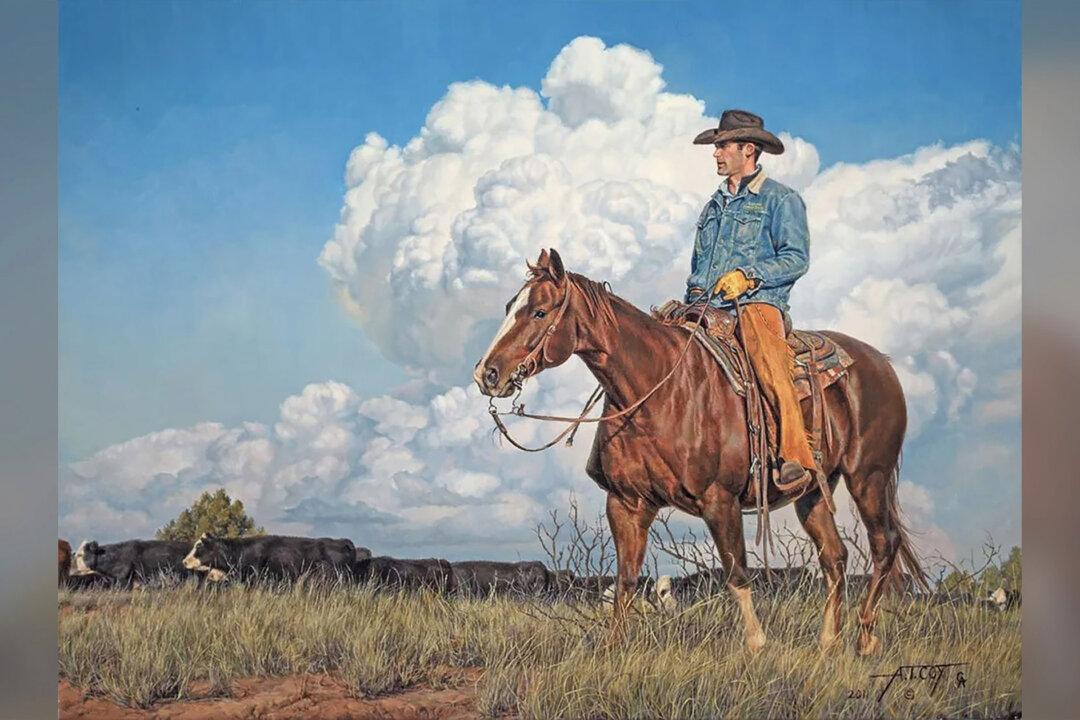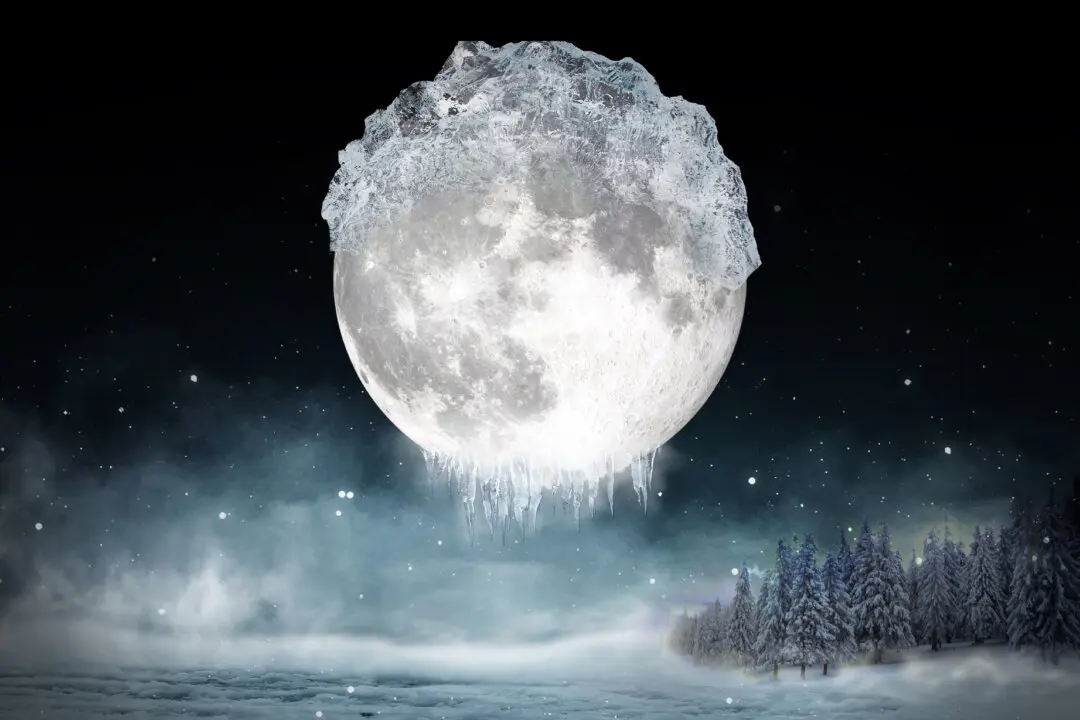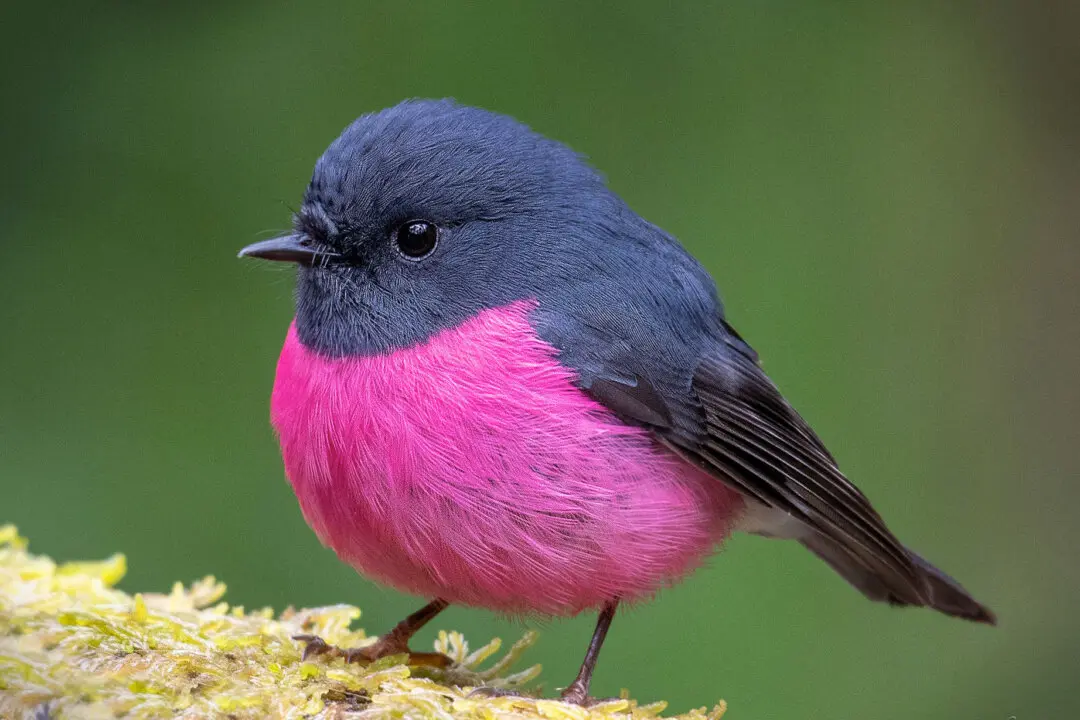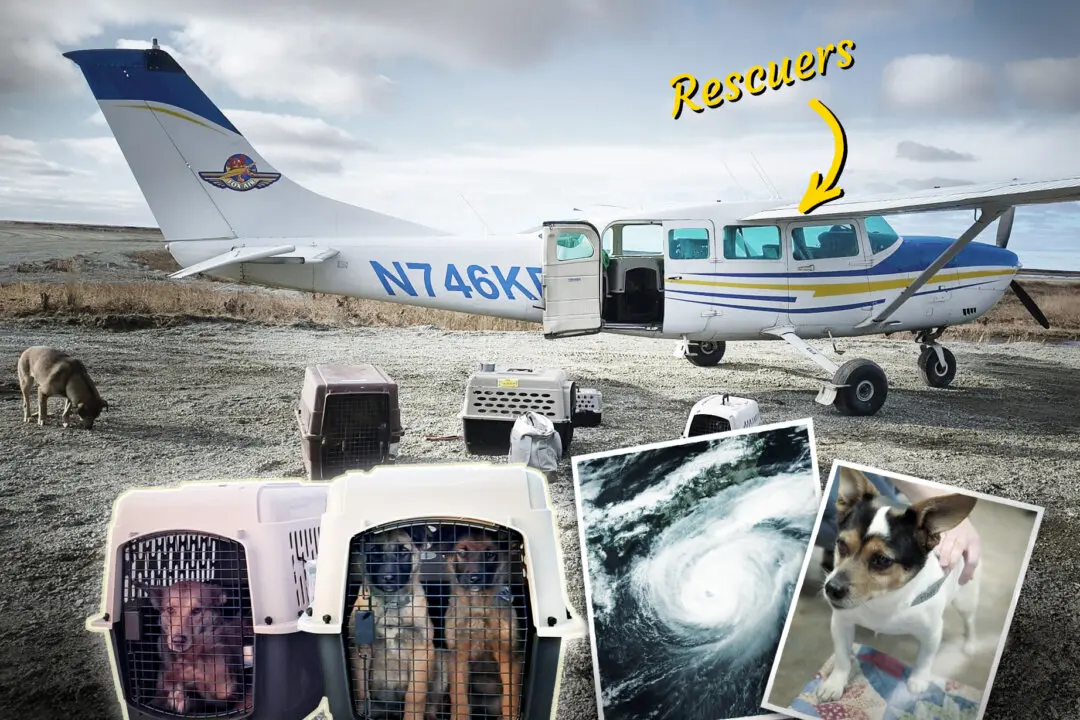Setting the mood for a cowboy painting, 65-year-old New Mexico artist Tim Cox begins mounting a smoothly primed board on easel, and, paintbrush in hand, applies ever-so-thinly diluted washes of lightly pigmented tones of oil and spirits. This is how a Western realist oil painting starts.
He masses-in main shapes first, fuzzy blobs, no details yet—there will be plenty of time for that later—and a picture, like a ghost, begins emerging from the stark white gessoed panel surface. A pencil underdrawing ensures the composition is plotted accurately.






